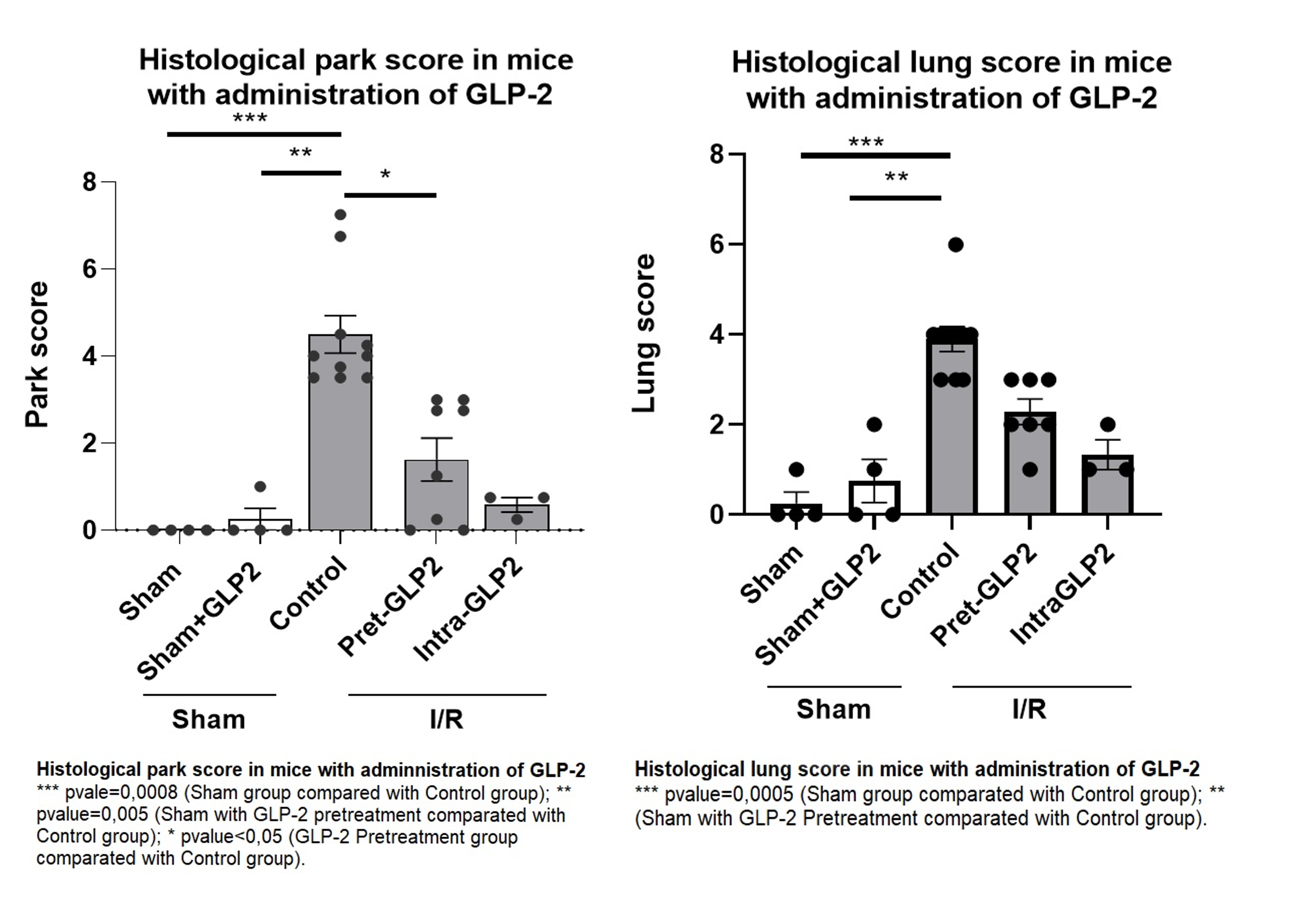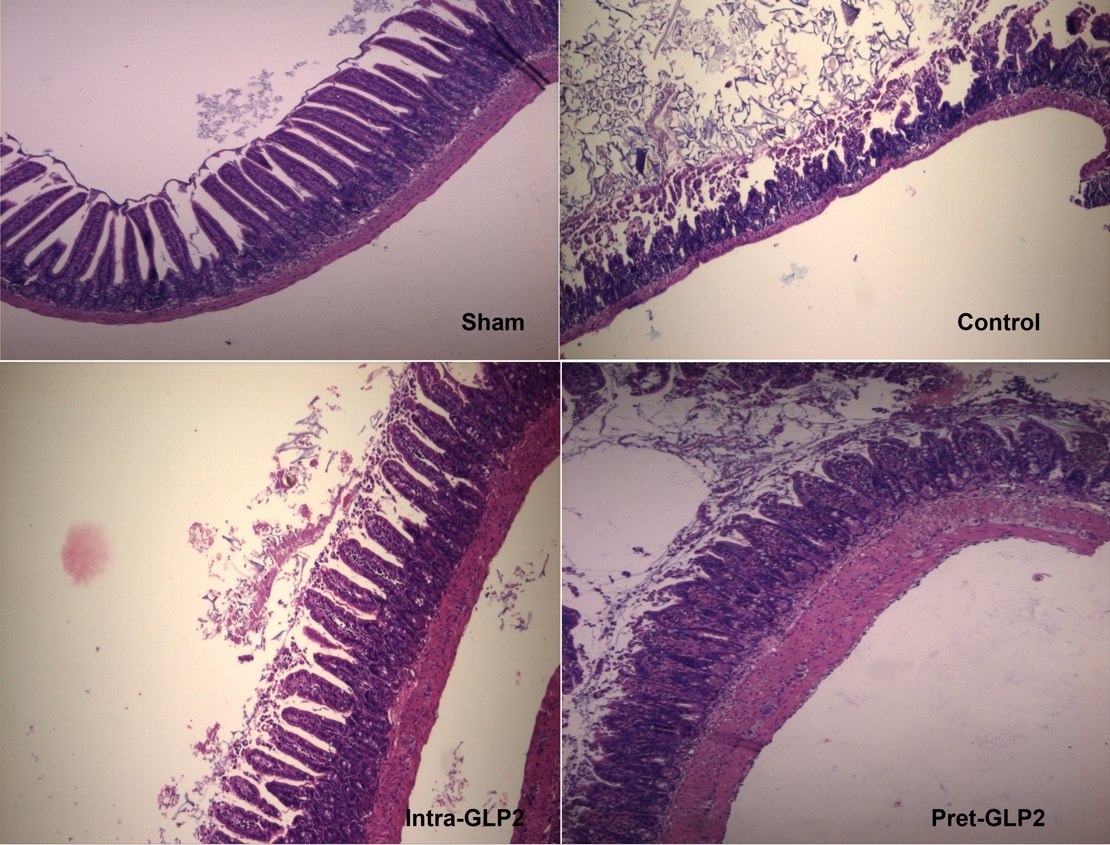Effect of GLP-2 analogue on intestinal ischemia-reperfusion injury in mices. Initial results
Jeremías Moreira1, Pablo Stringa3, Constanza Arriola1, Virginia Gentilini1, Ivana Ivannof3, Martín Rumbo3, Gabriel Gondolesi1,2.
1Instituto de Medicina Traslacional, Trasplante y Bioingeniería; Universidad Favaloro-CONICET, Capital Federal, Argentina; 2Servicio de Cirugía General, Trasplante hepático, Pancreático e Intestinal, Hospital Universitario Fundación Favaloro, Capital Federal, Argentina; 3Instituto de Inmunología y Fisiopatología, Universidad Nacional de La Plata (IIFP-UNLP-CONICET), La Plata, Argentina
Introduction: In recent years it has been shown that ischemia-reperfusion injury (IIR) is one of the risk factors associated to graft rejection. In the intestinal graft, the loss of the mucosal barrier function, the alteration in the permeability and structure of the villi are directly caused by IIR, mainly during the reperfusion process. Glucagon-like peptide-2 (GLP-2) is an intestinal hormone secreted by enteroendocrine L cells of the intestinal epithelium, the main therapeutic use of GLP-2 has been intestinal adaptation, but few experimental studies have shown a role in decreasing in inflammatory damage. Therefore we had hypothesized a possible protective effect of GLP-2 to reduce intestinal IIR in a mice model.
Methods: The study was approved by the internal review board and ethics committee for the care and use of laboratory animals (CICUAL UF 2019-004, #PICT 2016-3677). An IIR model clamping the superior mesenteric artery for 40 minutes followed by 30 minutes of reperfusion was proposed as control group. Five experimental lines has been be performed: 1) Sham Group, 2) Sham Group with intraperitoneal GLP-2 pretreatment for 3 days before surgery and an intraoperative dose (Sham+GLP2), 3) IIR Control Group, 4) IIR Group with intraperitoneal GLP-2 pretreatment for 3 days before surgery and an intraoperative dose (Pret-GLP2) and 5) IIR Group with only one intraoperative dose of GLP-2 (Intra-GLP2). After the reperfusion period, the mice were sacrificed and serum, intestine, liver and lung samples were taken. Histopathology and quantification of intestinal and pulmonary damage were performed. Park score was used for intestinal histological analysis. One-way ANOVA, and Kruskal-Wallis test were used.
Results: Sham groups (1 and 2) and study groups (4 and 5), showed significantly less intestinal injury compared to the Control group (3). The group with only one intraoperative dose of GLP-2 (5), had less average damage than the group with pretreatment and an intraoperative dose of GLP-2 (4). The damage evaluated in the lung presented significant differences between the Sham groups (1 and 2) and the Control group (3). Although the IIR group with intraoperative administration of GLP-2 showed the least histological lung damage of all groups under IIR, there were no significant differences between these preliminary results.
Conclusion: A marked decrease in IIR damage of intestine was observed by using GLP2 as pretreatment or intraoperative intraperitoneal. These preliminary results proof the hypotheses; the use of GLP2, to reduce IIR, opens a new line of research and potential new clinical use.


